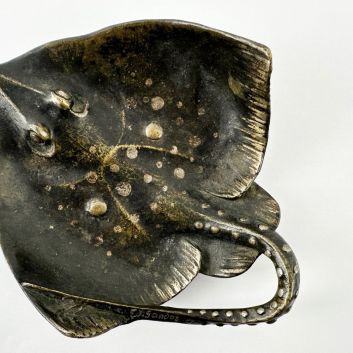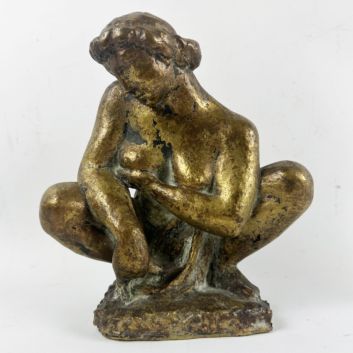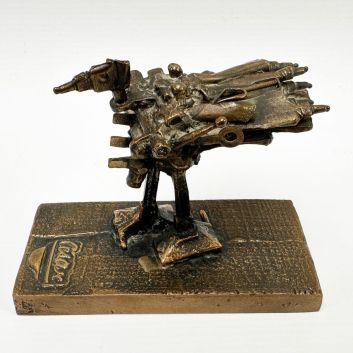Rating and value of works, sculptures, bronzes by Antoine Bourdelle
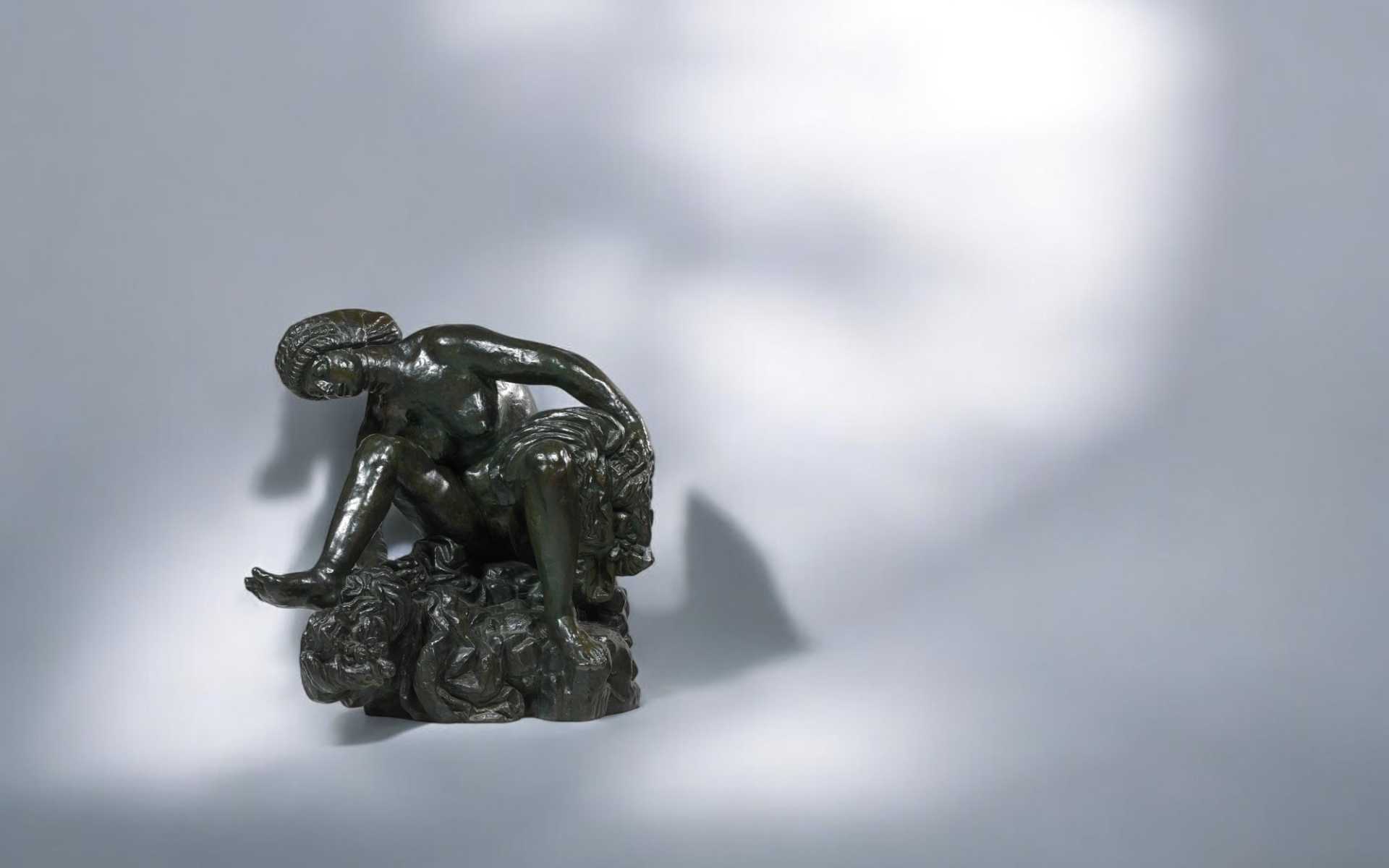
If you own a work by or after Antoine Bourdelle, and would like to know its value, our state-approved experts and auctioneers will be happy to offer you their expert appraisal services.
Our specialists will carry out a free appraisal of your work, and provide you with a precise estimate of its current market value.
Then, if you want to sell your work, we'll point you in the right direction to get the best possible price for it.
Cote et valeur de l'artiste Antoine Bourdelle
The artist Antoine Bourdelle left in his wake a very singular body of work, composed mainly of mythological subjects in bronze. A talented artist, he created numerous sculptures that were particularly prized at auction.
Today, prices for his works are skyrocketing under auctioneers' gavels. They are particularly prized by French and European buyers.
The price at which they sell on the art market ranges from €20 to €1,400,000, a significant delta but one that speaks volumes about the value that can be attributed to Antoine Bourdelle's works.
A copy of his 1909 bronze Héraclès, archer has already sold for €1,400,000. This is a record, however, as his bronzes usually sell for around €400,000.
Order of value from a simple work to the most prestigious
Technique used | Results |
|---|---|
Print - multiple | From €20 to €1,000 |
Drawing - watercolor | From €120 to €10,000 |
Sculpture - volume | From €230 to €1,400,000 |
Response in less than 24h
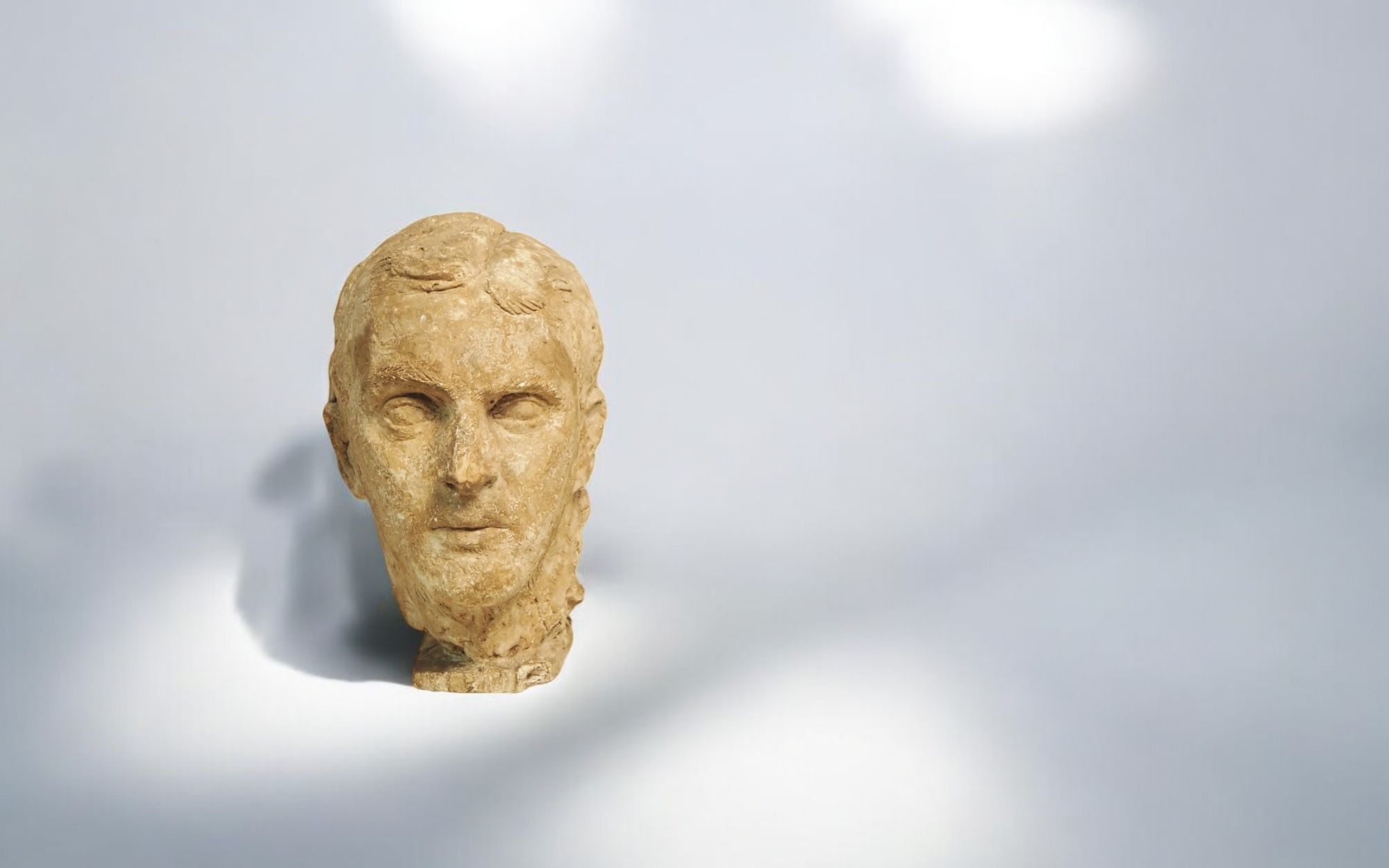
The work of Antoine Bourdelle
Antoine Bourdelle, an icon of modern art, mastered the bronze technique perfectly, using it to create monumental, expressive works.
His sculptures are distinguished by a raw power, a sense of grandeur that draws on antiquity while looking to modernity.
A student of Auguste Rodin, he gradually detached himself from the latter to develop his own style, marked by rigor and expressivity.
The taut lines and angular curves used by the artist paradoxically enable him to express all the emotion his works need, even if they remain trapped in a certain austerity.
Bourdelle excelled in depicting the human body, which he saw as a force in motion, stretched towards the grandeur of the world, represented in his work by an ancient iconographic repertoire.
His works, such as Héraklès archer or Le Centaure mourant, embody this restrained energy, where every muscle, every articulation is the fruit of meticulous observation and an almost architectural attention to detail.
His artistic approach captures the inner tension between man and his destiny, a recurring theme in Bourdelle's work, always at the frontier between classical tradition and modern innovation.
Although bronze is his material of choice, Bourdelle also works in marble and stone with remarkable mastery. His marble works exude a serenity and majesty that contrasts with the vigor of his bronze pieces.
The variety of materials he uses testifies to his versatility and ability to express complex ideas through different textures and finishes.
Bourdelle was not only a sculptor of monumental forms; he was also a talented portraitist.
His busts, such as the nationally-renowned Beethoven, display a rare psychological intensity, in which the artist succeeds in capturing not only the physical features but also the very essence of his subjects.
His portraits, often executed in bronze, convey a depth and inner strength reminiscent of his interest in mythology and heroism.
Throughout his career, Bourdelle remained an insatiable explorer of forms and ideas. He taught at the Académie de la Grande Chaumière, influencing a generation of sculptors who drew on his singular approach to art.
His quest for monumentality and spirituality in art is reflected in his public works, such as those he created for the Théâtre des Champs-Élysées, where his sculptural language unfolds on a grand scale.
Today, his works in bronze, but also in marble and stone, are highly sought-after on the art market and continue to arouse admiration for their ability to capture energy and humanity with unrivalled intensity.
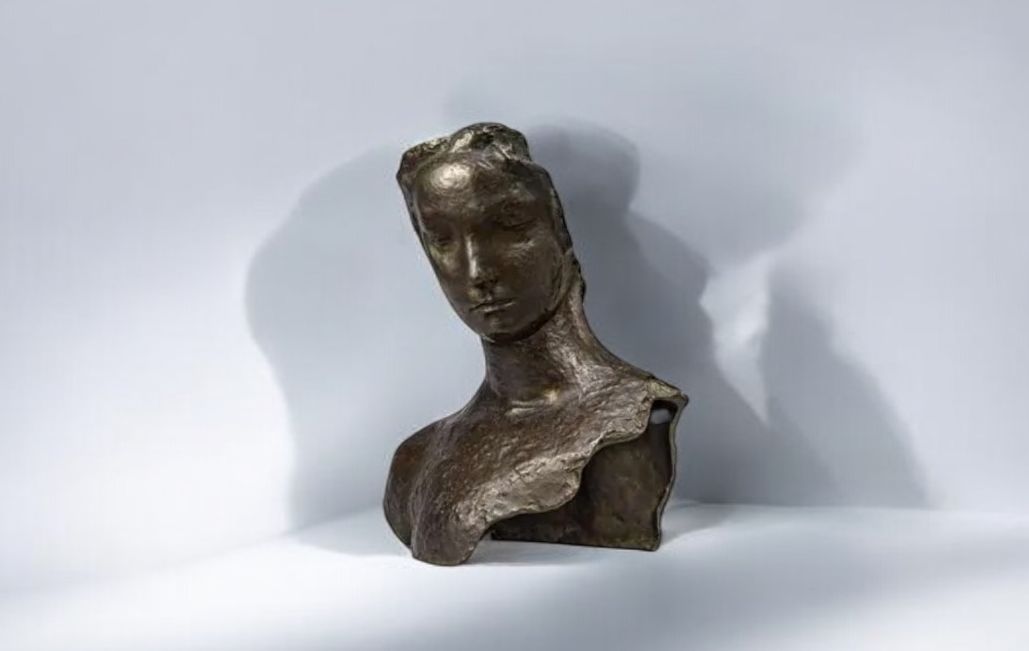
Antoine Bourdelle's career
Antoine Bourdelle (1861-1929) was a French sculptor born in Montauban, Tarn-et-Garonne. Born into a family of craftsmen, he arrived in Paris at the age of 19. Already interested in sculpture, he decided to make it his vocation and profession.
He studied at the Beaux-Arts, where he worked under the direction ofAuguste Rodin. This experience marked a turning point in his career, as he learned the techniques of sculpture while developing a style all his own.
He quickly made a name for himself with his work, and his first success came when L'Enfance de Bacchus was exhibited at the Salon. He produced numerous monumental sculptures, integrating movement and emotion into his creations, as exemplified by his works for the Théâtre des Champs-Élysées.
His sense of drama and heroism propelled him onto the artistic scene, attracting the attention of audiences and critics alike.
In 1900, he was awarded the gold medal at the Universal Exhibition, confirming his international success.
Antoine Bourdelle is also committed to training the next generation of artists at the Académie de la Grande Chaumière, where he shares his expertise and passion for sculpture.
His portraits, notably of Beethoven, reveal a remarkable psychological depth, captivating the eye of art lovers.
In the 1920s, he turned to more spiritual and religious themes, seeking to express peace and harmony through his work. His sculpture Herakles the Archer became emblematic of this period, illustrating his unique style and artistic vision.
Talented and renowned, Bourdelle produced a substantial output throughout his career, which he sold relatively well during his lifetime. Appreciated and sought after by critics, his works were regularly exhibited, increasing his value on the art market.
Antoine Bourdelle died in Paris in 1929, leaving behind a precious artistic legacy. His sculptures continue to be exhibited in museums around the world, testifying to his talent and indelible contribution to modern art.
Beethoven's great tragic mask by Bourdelle
Focus on Bourdelle's bust of Beethoven
The bust of Beethoven is one of Antoine Bourdelle's masterpieces. Characterized by brutal power, it reflects the composer's psychological suffering.
Bourdelle excels in depicting complex emotions, capturing Beethoven's inner struggle with blindness. The taut lines and angular curves give the work a palpable tension, a restrained violence that evokes the artist's torments.
With this bust, Bourdelle succeeds in transcending the simple face, reaching the very essence of his subject. Every detail, every shadow, is the fruit of meticulous observation, revealing a rare psychological intensity.
Bourdelle has succeeded in restoring the composer's majesty through this portrait, which at the same time cries out for suffering, and unleashes on the viewer a double creative energy, dazzling with violence, reflecting the artistic intensity of two creators of genius.
His artistic approach straddles the border between tradition and modernity, reflecting an inner strength that recalls his interest in drama and heroism.
Although bronze is his preferred material, he expresses complex ideas in this work with even greater determination than usual, bringing Beethoven's suffering and greatness to life.
Bourdelle was not only a sculptor of monumental forms; he was also a talented portraitist. This bust testifies to his ability to stir the soul of his subjects, to translate the depth of human emotion into matter.
Throughout his career, Bourdelle remained an uncompromising explorer of forms and ideas, influencing a generation of artists with his unique approach.
His quest for monumentality and spirituality in art is reflected in every sculpture, of which the bust of Beethoven is a magnificent illustration.
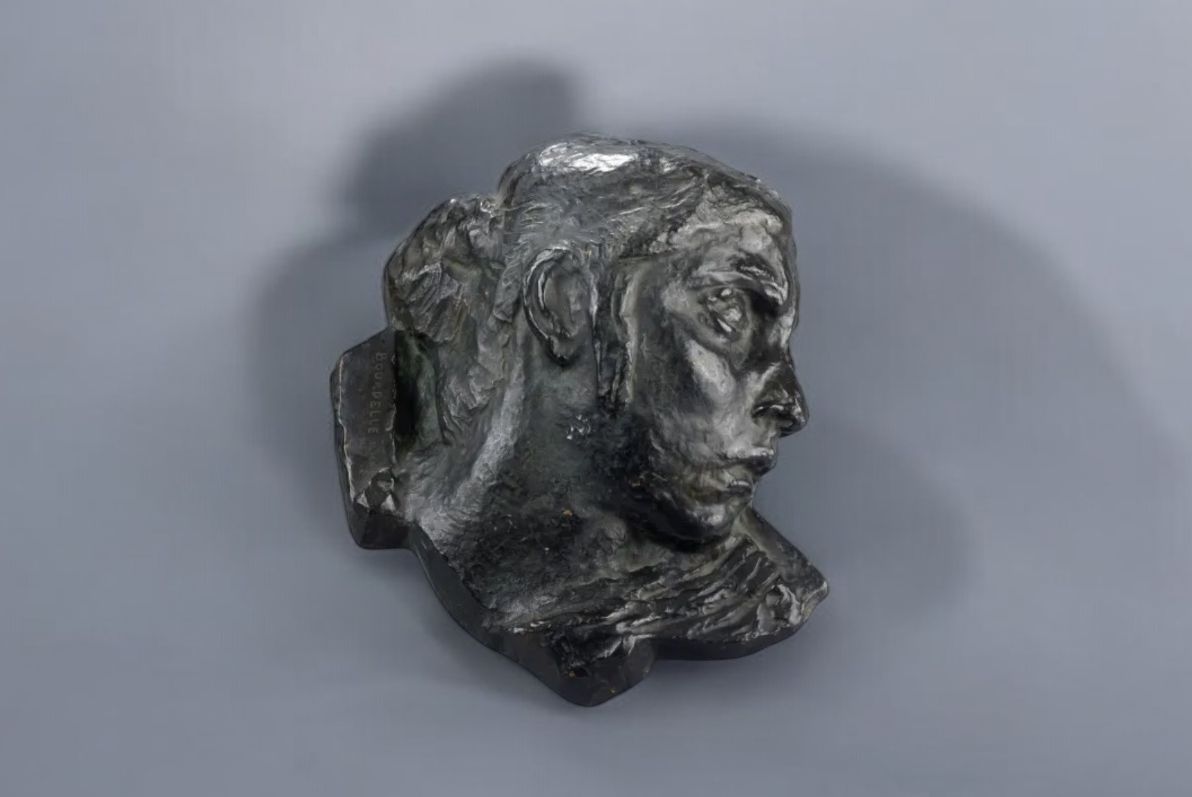
Antoine Bourdelle's imprint on his era
Some of Antoine Bourdelle's works can be seen in museums and public spaces across France and beyond, but a significant number remain in private collections. Recently, his work has been enjoying a renaissance on the art market.
The artist left a lasting impression on his era through his exceptional talent and the diversity of the sculptures he created, all using materials of the highest quality.
Over the course of his prolific career, Bourdelle forged ties with a number of influential figures, including artists, writers and patrons of the arts, such as Rodin, who gave him invaluable advice.
At the same time, he knows how to capture the psychology of his subjects, creating works imbued with strength and emotion, while maintaining a certain austerity.
Bourdelle influenced twentieth-century sculpture alongside artists such asAristide Maillol and Igor Mitorajleaving an indelible mark on the artistic landscape of his time.
Recognizing the artist's signature
Not all Antoine Bourdelle's works are signed, and different variants exist. That's why, if you think you own a work by or after the artist, it's essential to have it appraised by an expert who can authenticate it.
Some of his works are monogrammed with an intertwining star.

Knowing the value of a work
If you happen to own a work by or after Antoine Bourdelle, don't hesitate to request a free appraisal using the form on our website.
A member of our team of experts and certified auctioneers will contact you promptly to provide you with an estimate of the market value of your work, as well as any relevant information about it.
If you wish to sell your work of art, our specialists will also be on hand to help you sell it at the best possible price, taking into account market trends.
Response in less than 24h
Related topics
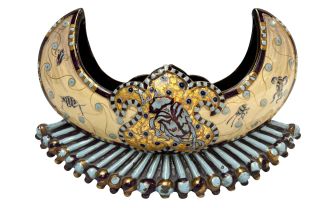
Value and quotation of Émile Gallé's earthenware works
Nineteenth-century artist Émile Gallé produced a considerable number of works, notably in earthenware. Their vote is high. Estimated in 24h.
Read more >
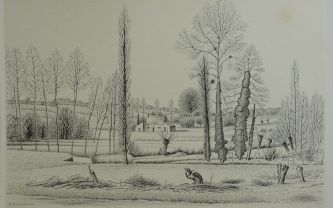
Rating and value of works, drawings, prints by Kiyoshi Has...
Kiyoshi Hasagewa, a 19th-century Japanese painter, draughtsman and illustrator, produced many works appreciated on the auction market.
Read more >

Rating and value of paintings by Serguei V...
Serguei Vinogradov is a Russian painter somewhere between realism and impressionism, who has produced numerous works of great value.
Read more >
Secure site, anonymity preserved
State-approved auctioneer and expert
Free, certified estimates
